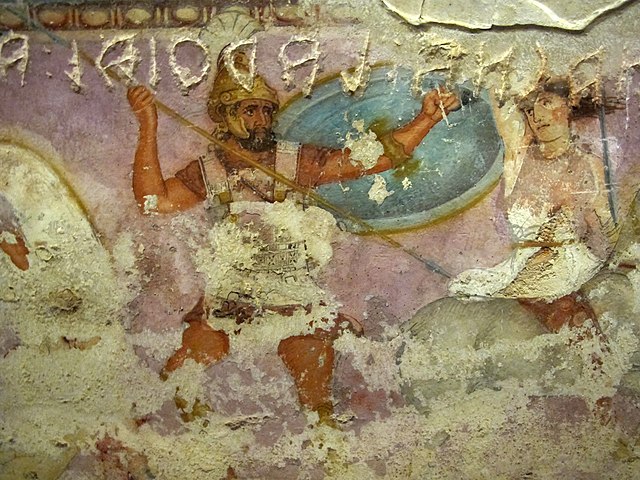In Greek mythology, the Amazons are portrayed in a number of ancient epic poems and legends, such as the Labours of Heracles, the Argonautica and the Iliad. They were a group of female warriors and hunters who were known for their physical agility, strength, archery, riding skills, and the arts of combat. Their society was closed to men and they only raised their daughters and returned their sons to their fathers, with whom they would only socialize briefly in order to reproduce.
Wounded Amazon of the Capitoline Museums, Rome
A Greek fighting an Amazon; detail from painted sarcophagus found in Italy, 350–325 BC
"Amazon preparing for battle" (Queen Antiope or Hippolyta) or "Armed Venus", by Pierre-Eugène-Emile Hébert, 1860, National Gallery of Art, Washington, D.C.
Departure of the Amazons, by Claude Deruet, 1620, Metropolitan Museum of Art, New York
The Labours of Hercules or Labours of Heracles are a series of tasks carried out by Heracles, the greatest of the Greek heroes, whose name was later romanised as Hercules. They were accomplished in the service of King Eurystheus. The episodes were later connected by a continuous narrative.
Roman relief (3rd century AD) depicting a sequence of the Labours, representing from left to right the Nemean lion, the Lernaean Hydra, the Erymanthian Boar, the Ceryneian Hind, the Stymphalian birds, the Girdle of Hippolyta, the Augean stables, the Cretan Bull and the Mares of Diomedes
Mosaic of Llíria (Valencia, Spain)
The Heracles Papyrus, a fragment of a 3rd-century Greek manuscript of a poem about the Labours of Heracles (Oxyrhynchus Papyrus 2331)
The Origin of the Milky Way by Jacopo Tintoretto, 1575








